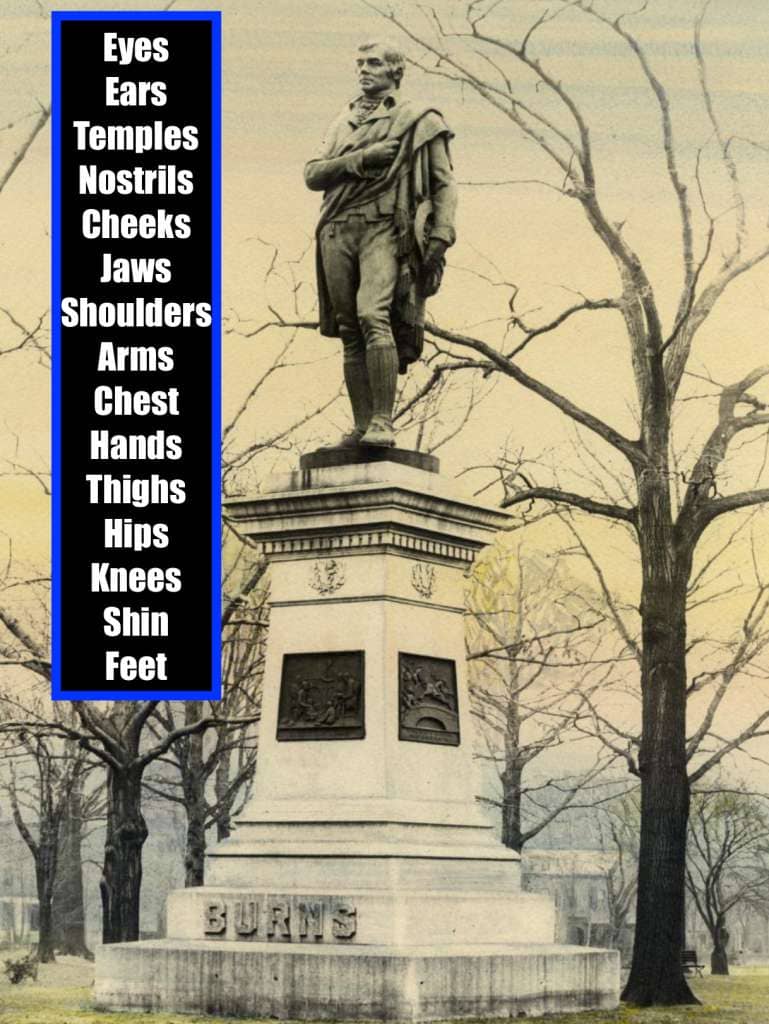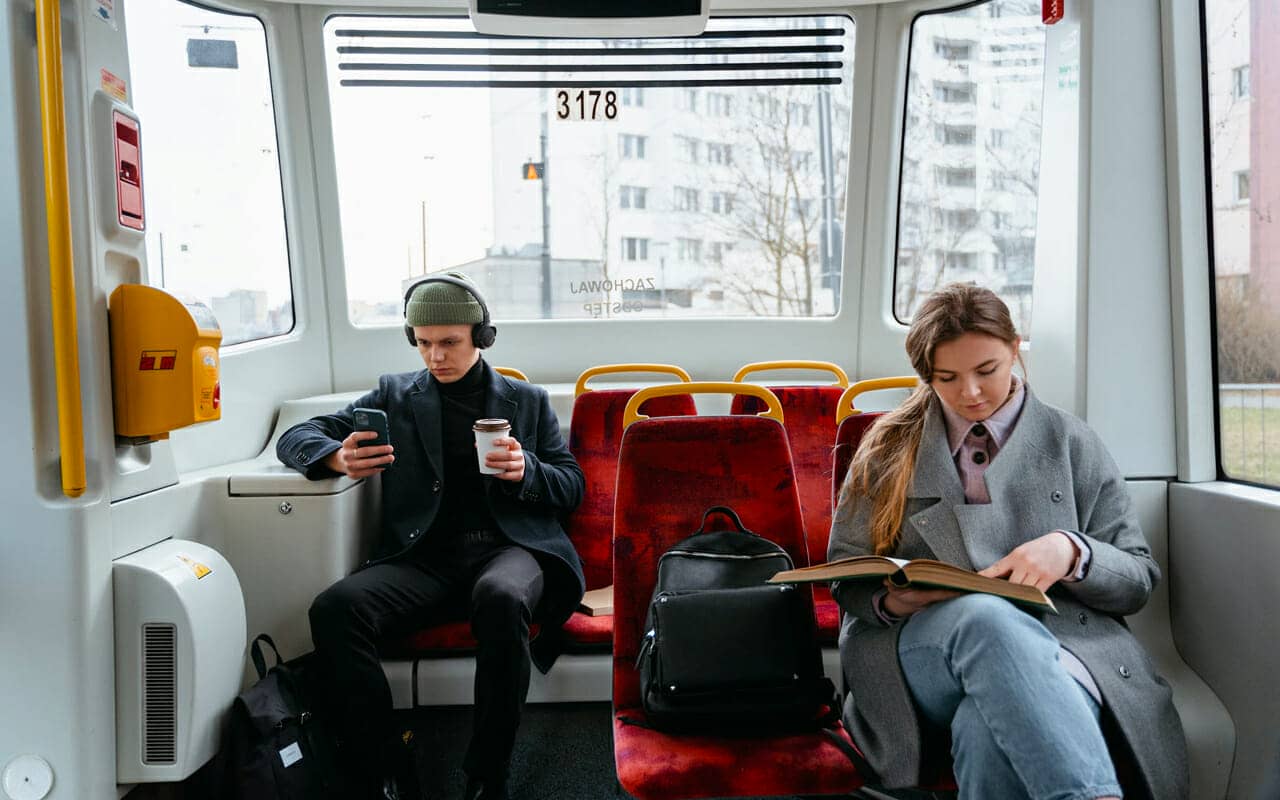Podcast: Download
Subscribe: Apple Podcasts | RSS

Tricky challenge, isn’t it?
I went to university for eleven years before I finally got my PhD. That means I’ve faced every issue you can imagine when it comes to discovering the best and quietest study locations.
I’ve overcome every obstacle and barrier under the sun.
And later, when I was a professor myself, my skills at focusing in a variety of places paid off big time. I still use these skills as an author to this day.
I’ll share a bit about my current study habits with you too. Because, quite frankly, I wish I’d known what I found out as a professional much earlier.
But more on those points later.
Let’s talk about finding learning locations that you can rely on. I’ll pile on some of my best learning tips as we go.
The 11 Best Places to Study (and How to Actually Study There)
As we go through this list, there’s no particular order of importance.
But I’ll stress one point:
Any place you can study is the best place.
Variety is the key at the end of the day, as is training yourself to focus your mind at will.
One: The Biggest Library You Can Find
Libraries aren’t necessarily quiet places to study. That’s why the bigger they are the better. You will have multiple options to choose from if the part you’re in starts getting noisy.
Multi-floor libraries are especially good, as is moving regularly. Not only can you get the scientifically proven benefits of moving around. You’ll also have a chance to practice interleaving.This process can be as simple as flipping through a few other books so that your brain absorbs the main topic with greater depth and speed.
Finally, large libraries tend to have better trained staff.
Make no mistake:
A good librarian can help you solve many problems. I’ve not only drawn upon the help of librarians around the world. I’ve worked in three libraries myself, once as an assistant for the head research librarian at York University.
Librarians are smart people and they can point out resources you’d never find on your own, which makes your research easier and much more fun.
Two: Clubs & Associations
While at York University, I became the president of the English Undergraduate Student Association for one simple reason:
It came with an office. I also had access to multiple parts of the campus that regular students did not.
When you’re part of a university club or association, you may be able to do the same.
The trick is to tie these activities into the topic you’re studying as much as possible. For example, every guest I invited during my presidency was related to an area of study or assignment I was working on.
And make no mistake: When you can shift the activities of the organization you choose to participate in, you’re getting more than good places to study. You’re getting fantastic experiences for your resume and reference letters for the future.
Three: Parks With Statues & Buildings
Whenever it’s warm outside, I like to study in parks. Back in Toronto, I loved studying in the Allan Gardens because I could use one of its buildings and a statue as a Memory Palace.
It works simple:
You chart out a journey on the statue or use an ancient memory technique taught by Giordano Bruno. I did this with the Robbie Burns statue by creating 30 stations:
By selecting only the parts of the body that come in pairs, you get 30 stations in total. You can also use the pedestal if you like, but in this case I did not.
Once you have the statue mocked out with stations, you just need to apply some mnemonic imagery to each of the stations. That way, the information has a place it can stick.
The only downsides to studying in parks is that the weather can change in a flash. Traffic noise can pick up during certain times a day and you never know when a demonstration might arise.
Other than that, they are by far my favorite places to study. I still study out doors, often for weeks at a time without missing a day.
Four: Buses & Trains
Sure, they can be noisy. But I used to play in bands and always had ear plugs with me.
They’re cheap and you can find them at just about any drugstore or pharmacy.
The main downside is that you have to keep an eye on the destination, but I often set a timer so I could feel my phone buzz in my pocket in good time to gather my stuff in time to depart. Or I would tell the driver that I would be wearing ear plugs and ask for a reminder. Many drivers are perfectly happy to help you out and you can sit close to them. That makes it easier for them to alert you.
Later, when I taught at Rutgers, I found myself living in Manhattan. I had to commute all the way from Washington Heights to New Brunswick in New Jersey.
I would study for my dissertation on the way in and grade student assignments on the way back. More often than not, I got all of my grading done before reaching Penn Station.
Five: Rooftops
When I lived in Vancouver, the “secret garden” on top of the Vancouver Public Library was one of my favorite study places. I also use to hang out and study with my friend Jen on her rooftop to read books and discuss what we were studying.
There are all kinds of little places like these around and all you have to do is ask about them or search the Internet.
Six: Grad Lounges
One of the reasons I learned so much at university is because I hung out in the grad lounge. Back at York, it was called the Seventh Floor Grad Lounge. Now it’s on the ground floor.
Places like these are great for studying at certain times of day. You’ll often hear graduate advisors helping their students and get inspiring ideas from overhearing their meetings.
Or you’ll talk to some of the star faculty yourself. I sat with Robin Wood many times, a highly regarded film scholar during his time.
Frankly, between him and the man who eventually became my own graduate supervisor, I probably learned more talking with these guys than from all of my courses combined.
The only problem with these locations is they can get noisy in the mid-afternoon and stay noisy until late at night. Budget your time for this happening.
Seven: Cafe Circuits
Just as you want big libraries so you can move around, having a “circuit” of cafes is tremendously useful. In Toronto during my university years and later in Berlin while writing and studying German, I charted out a robust map of cafes.
Rather than study in just one, I would spend approximately forty minutes to an hour. Then I would move on to the next.
The routine gave my brain plenty of focus time and an opportunity for mind wandering. If you’re concerned that you’ll be losing time while walking between cafes, Rest, Mindwandering and Stolen Focus are three science-packed books that beg to differ.
The main thing you have to watch out for is not burning out your adrenals. Coffee can boost focus and attention, but too much of it has a negative effect.
Eight: Some Bookstores
There are so many great bookstores. But not all of them are suited for studying.
It can take some hunting, but some of them have cafes in them. Or they have open spaces with nice chairs and tables.
Used bookstores in particular can be especially useful. They have older books that you probably wouldn’t stumble across otherwise. If you know how to read faster, you’ll readily get a lot out of them.
Nine: Closets
Okay, this is going to sound kind of weird.
But during part of my studies, I suffered bad clinical depression.
Noises used to drive me bonkers, as did too much light. “Where can I go to study?” I would fret.
Then, suddenly a memory dawned on me and I returned to something I used to love doing as a kid.
See, we had a hard curfew when I was young. So I would sneak one of my dad’s flashlights into my room. To hide the light, I would crawl into my closet and read until three a.m. or later.
I remembered this when I was struggling during university. Tossing a bunch of pillows and blankets into the closet and propping up the biggest flashlight I could find provided me with maximum comfort and focus while reading.
Ten: Study Groups
Many libraries have rooms for study groups. You just need to book them in advance.
You can often get them just for yourself, but it’s great if you can get a few people together who are focused on a similar topic.
Obviously, you’ll also need private and quiet study time. And you can get a ton more out of studying with others if you’re slightly prepped.
My favorite study group in grad school was hosted by my Hebrew tutor and reach of us read a different article in advance. Then we’d present what we’d read. This mean getting exposure to a much larger pool of knowledge than any of us could have on our own.
Eleven: Places Where You Can Trust Others
“Hell is other people,” as the philosopher Sartre said.
Although that’s a bit of an extreme way to look at things, let’s call a spade a spade:
One of the biggest problems learners face is getting people to keep quiet and eliminate distractions.
To do that, you sometimes have to draw upon a kind of commander-in-chief aspect of your personality.
Make it clear to people that you’re not to be disturbed and they will tend to respect your request. And realize that there is a hidden, yet massive benefit to alerting people in this way: You have to schedule your own time in order to schedule their “no interruptions” periods.
You should also block off certain spaces.
I learned a lot from my friend’s mom. She was a professor and had a simple sign on her home office door. It said, “writing.”
And when that word was facing you, no knocking or talking was allowed.
Simple, yet effective.
The Best Public Place To Study
The absolute best public place to study is the one you:
- Practice studying in
- Get the best results in
- Test and experiment with over time
This set of conditions means that many places can be the “best.”
And my philosophy has always been to do whatever it takes to get the job done. That’s why I often moved around and continue doing so.
Even when revising my books, which is a kind of study, I will get them printed and read them in different locations. It’s so key to observing a maximum amount of details, rather than the minimum.
As I shared, ear plugs are key, but here’s one step better.
In 2012, I invested in custom ear plugs. These are the kind you can put filters in.
They’re so comfortable and you can still hear your surroundings. The noise just interferes with you less.
It takes a bit of time to get them fitted and they’re not exactly cheap. But they last for years, travel small and make it possible to study just about anywhere without any distractions.
So there you have it. My best tips for finding incredible study spots.
Why not get out there and start experimenting so you can find yours?








Great read. Will try out a park/ statue as a memory palace.
Thanks for stopping by, Maree, and please do.
I hope you find it as practical and useful as I do.
Hello Anthony, I hope you are well.
I have a question, I know that collating books is as important as writing down the key points on cards and coding them in the Memory Palace, how exactly do I do that? At each book exchange I set aside some time to encode the information and move on to the next book or leave the sheets separate and at the end of the intercalation of all the books I encode the sheets, if so every few cycles of intercalation I dedicate myself to coding?
And one more question. Does each book have to have its individual Memory Palace? If I’m studying books on different or related subjects?
Thanks, João. I’m doing well and thanks for asking.
If you mean interleaving, it’s an important principle that involves switching between books so you avoid topic exhaustion and allow your brain the benefits of diffuse thinking.
It’s really the same thing with using the Memory Palace technique. We don’t need or want to spend too much time with any particular one of them.
How exactly you’re going to use your Memory Palaces needs some exploration as you learn to master the techniques. Think of it like a martial art: There is no “exact” way to do it because books, like sparring partners, come in different shapes and sizes.
Instead, you want to learn and practice the memory techniques covered on this blog with a variety of books so that you develop a strong sense of what to do and how to do it with the ability to shift when you encounter surprises in the information types you’ll encounter.
To your other question, no, each book doesn’t have to have its own Memory Palace. But sometimes you’ll want to do that. For some books, I’ve given each chapter it’s own Memory Palace. It really depends on the nature of the information and the exact goal you have for the information.
Again, the skill here involves practicing it so you become a master of your memory and know how to shift when necessary because you’ve accumulated experience and tactics related to your journey.